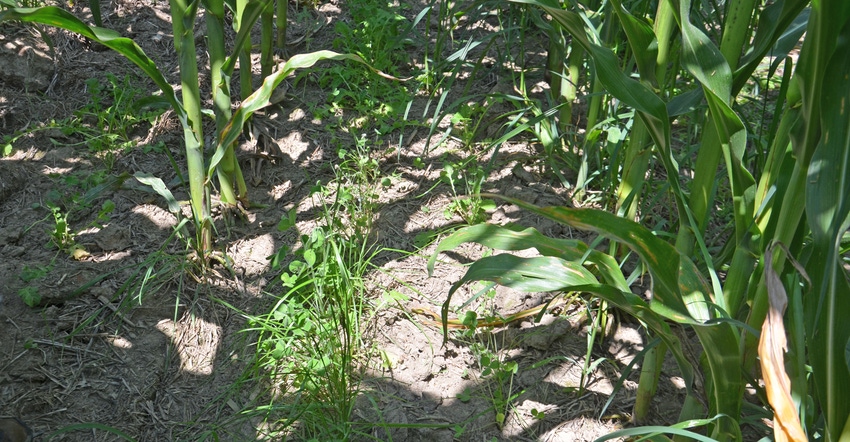
Jamie Bultemeier believes in the value of cover crops. His problem is getting them planted in time in the fall so they grow enough either to provide value in the fall, or to overwinter properly. That’s why he’s cooperating with a demonstration trial to see if cover crops will establish if planted into corn earlier in the season.
“I’m interested in protecting the soil with cover crops, but the problem is, it’s usually so late after harvest that the choice of cover crops is limited,” says Bultemeier, Fort Wayne, Ind. “For example, radishes need to be planted before crops come off to get enough growth in the fall to provide benefit.”
As a demonstration trial on Bultemeier’s farm, Mike Werling, a Decatur, Ind., farmer, planted strips of cover crops into standing corn shortly after nitrogen was sidedressed earlier in the summer. Werling is president of the Maumee Watershed Alliance and does conservation consulting work as a part-time employee of the Allen County Soil and Water Conservation District.
“We know that the interseeder concept works when herbicide doesn’t interfere,” Werling says. “The benefit of having cover crops growing at black layer in northern counties is it gives us three months of extra growing compared to planting after harvest.”
Herbicides were causing some interference with the cover crop strips in Bultemeier’s field, but where the herbicide rate was lighter, he was happy with the results. He wanted to determine if the concept works; then he can try adjusting herbicides. He’s already thinking it may be possible to seed cover crops and sidedress nitrogen in one pass in the future.
Grasp the concept
“The hard thing for a producer to accept is the implausible concept that something growing in the corn can be helpful — not a competing plant, but a companion!” Werling says. “We have all been conditioned to ‘clean field’ advice as the only way to farm.”
The Allen County SWCD has supported these demo plots as a way of showing what can happen, Werling says. “Jamie is very excited to have things growing, and my hope is for him to make chemical changes to allow the cover crops to survive in the future.
“Contact herbicide, early incorporated — or in my case, a heavy stand of cereal rye planted into green and roller-crimped with a crimper — is a good change in how to do things.”
He believes Penn State University is the best source of herbicide testing that applies to the interseeding concept of planting cover crops into growing corn early in the season.
“In our INfield Advantage plots, we would expect a 2- to 4-bushel-per-acre yield increase with interseeding, and have seen a 14- to 17-bushel-per-acre increase in a plot before,” Werling notes. INfield Advantage is a farmer-driven testing program supported by the Indiana State Department of Agriculture. The goal is to allow groups of farmers within various areas of the state to try different practices and then compare results after the season.
About the Author(s)
You May Also Like




